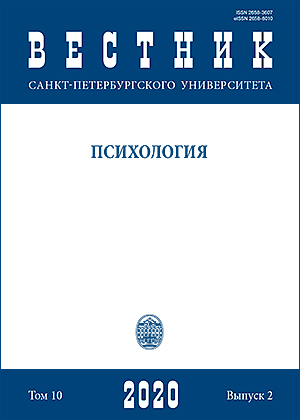Prediction and efficacy control in sensorimotor activity with Delboeuf illusion
DOI:
https://doi.org/10.21638/spbu16.2020.206Abstract
Theoretical ideas describing the dependence of task results on subjective ideas about one’s own capabilities are well known in psychology. In the context of sensorimotor activity, these ideas predict an increase in efficiency when working with subjectively simple goals and decrease when working with subjectively complex ones. The subjective perception of the complexity of the task is modeled by using the illusion of size. The article analyzes the contradictions in the research results on the material of the Ebbinghaus illusion and proposes modifications of previously used experimental paradigms. An experimental study of sensorimotor activity in the format of a computer game was carried out. 65 participants of the study were offered the task of precisely obtaining the goals represented by the Delbeuf illusion, or reaching the control goals. Prediction and subjective performance evaluation were also measured using the questions “Will you reach it now?” and “Did you reach it in the previous test?”. The results showed greater accuracy in obtaining an illusory larger target compared to an illusory smaller one. The data on forecasting and subjective assessment of efficacy did not significantly differ between illusory stimuli, however, the assessment of a substantionally smaller goal was different from the rest — study participants believed that they were less able to reach a substantionally smaller goal. The analysis of the preparation period for the beginning of the task also revealed differences between the perception of illusory and control stimuli. The results obtained serve as evidence in favor of the idea concerning the existence of a special psyche mechanism that makes predictions about possible efficacy of a particular task and then adjusts the real results to the proposed forecast.
Keywords:
sensorimotor learning, illusory stimuli, Delbeuf illusion, Ebbinghaus illusion, selfefficacy, efficiency control
Downloads
References
References
Downloads
Published
How to Cite
Issue
Section
License
Articles of "Vestnik of Saint Petersburg University. Psychology" are open access distributed under the terms of the License Agreement with Saint Petersburg State University, which permits to the authors unrestricted distribution and self-archiving free of charge.




